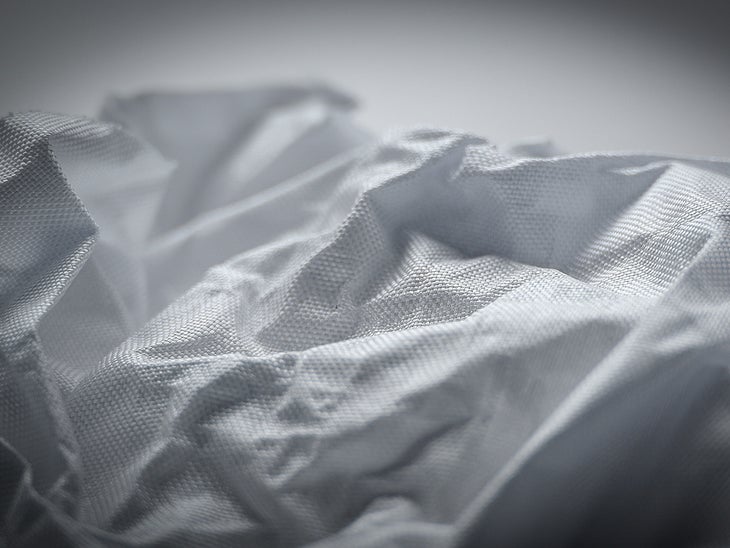“], “filter”: { “nextExceptions”: “img, blockquote, div”, “nextContainsExceptions”: “img, blockquote, a.btn, a.o-button”} }”>
Heading out the door? Read this article on the new Outside+ app available now on iOS devices for members!
>”,”name”:”in-content-cta”,”type”:”link”}}”>Download the app.
Dyneema, the name behind the incredibly light and strong fabric used in many ultralight packs and tents, has finally unveiled a long-awaited woven fabric. The new release, called Dyneema Woven Composites, is designed for use in bags and packs. It also marks a clear response to upstart fabrics like Ultraweave and Graflyte, which have emerged as new favorites for ultralight brands in the 10 years since Dyneema last introduced a new textile. Hyperlite Mountain Gear is the first brand putting the new fabric to use in three updated packs, which will be available this month.
Dyneema, once called cuben fiber and now officially called Dyneema Composite Fabric (DCF), has been a mainstay in the ultralight gear industry for decades. The plastic that creates it, ultra-high-molecular-weight polyethylene (UHMWPE), is celebrated for its impressive strength-to-weight ratio. But in recent years, DCF has lost its monopoly over the outdoor gear industry. Although DCF remains the top choice for shelters, other UHMWPE fabrics, like Ultraweave from Challenge Outdoor and ALUULA Composites’ Graflyte, have supplanted Dyneema as the pack fabric du jour, thanks to woven structures that boost strength and durability.
Now, Dyneema Woven Composites (we’ll call it DWC) is the brand’s long-awaited response to its more modern rivals. So how does it stack up against Ultra and Graflyte?
DWC is a three-layer composite fabric, with a 100 percent UHMWPE woven face, a middle layer of gridded UHMWPE (the same grid used in classic DCF), and a film backing. So far, it’s available in two weights, a 100-denier version that’s 3.1 ounces per square yard and a 200-denier version at 3.9 ounces per square yard. (Hyperlite is using the 200-denier in its new packs.) Both Ultra and DWC have two layers of UHMWPE, but Ultra uses a wider grid of thicker strands, while DWC has a tighter grid of thinner strands. DWC and Graflyte both have 100 percent UHMWPE face fabrics, while Ultra has a blend of 67 percent UHMWPE and 33 percent polyester. Like other UHMWPE fabrics, DWC is inherently waterproof and very resistant to stretching.
Dyneema has published some strength and durability metrics for DWC, but they are hard to use in a head-to-head comparison against its competitors. ALUULA hasn’t published any numbers for Graflyte. Ultra has some figures, but because they use different tests, it’s hard to say exactly how they compare to DWC. Ultra publishes its abrasion resistance; Dyneema does not (though it does say that the 200-denier DWC is 10 times more abrasion-resistant than the 3.8-ounce Hybrid DCF used in current Hyperlite packs). Both publish tear strength, but use different testing protocols. Nonetheless, DWC’s tear strength appears to be off the charts. The 200-denier DWC has a tear strength of 250 pounds, which is closer to the 800-denier Ultra than the 200-denier.

This new fabric is a significant upgrade for Hyperlite Mountain Gear, which has exclusively used Dyneema fabrics in its pack line. As other brands transitioned from Dyneema to Ultra or Graflyte, Hyperlite stuck with Dyneema Composite Hybrid fabric, which features a woven polyester face. Regardless of how DWC eventually compares to Ultra and Graflyte after long-term testing, it’s an obvious upgrade to the current Hyperlite packs.
For now, Hyperlite, which has been testing DWC for two years, has exclusive rights to the new Dyneema fabric. Three packs—the Windrider, Junction, and Southwest—are now updated with DWC, as well as redesigned back panels and shoulder straps. Prices start at $380. The material will be available to other brands and fabric retailers starting in 2026.
